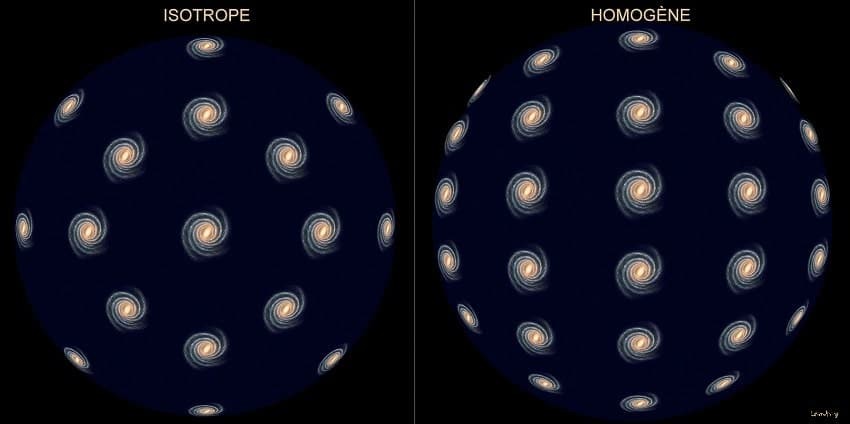All matter in the Universe is made up of atoms. Each of these building blocks has a positively charged nucleus, made up of protons and neutrons, and orbiting negatively charged electrons. The number of protons, neutrons and electrons in an atom determines which element it belongs to in the periodic table and influences how it reacts with other atoms around it. If all matter is made up of atoms, how many of these are in the observable Universe?
To start small, there are about 7 octillion, or 7×10 27 (7 followed by 27 zeros) atoms in an average human body. Given this vast sum of atoms in a single person, one would think that it would be impossible to determine how many atoms are in the entire Universe. And it is:we have no idea how big the whole Universe really is, so we can't know how many atoms there are.
However, it is possible to roughly calculate the number of atoms in the observable Universe — the part of the Universe that we can see and study — using a few cosmological assumptions and a bit of math. The present Universe would have been created during the Big Bang 13.8 billion years ago. But since the Universe has been in accelerated expansion for at least 6 billion years, and given its rate of expansion over long distances, the diameter of the observable Universe is today estimated at around 90 billion years- light.
According to Einstein's famous equation E=mc², energy and mass, or matter, are interchangeable, so it is possible for matter to be created or transformed into energy. But on the cosmic scale of the Universe, it can be assumed that the amount of created and uncreated matter cancel each other out. This means that matter is finite, so there are the same number of atoms in the observable Universe as there always have been. This is important, because our picture of the observable Universe is not a single snapshot in time.

According to observations of the known Universe, the physical laws that govern it are the same everywhere. Combined with the assumption that the expansion of the Universe is constant, this means that on a large scale, matter is evenly distributed throughout the cosmos — a concept known as the Cosmological Principle. In other words, there are no regions of the Universe that contain more matter than others. This idea allows scientists to accurately estimate the number of stars and galaxies in the observable Universe, which is useful because most atoms are found in stars.
First, we must assume that all atoms are contained within stars, even if they are not. Unfortunately, we have a much less accurate idea of how many planets, moons, and space rocks there are in the observable universe compared to stars, which means it's harder to add them into the equation. But because the vast majority of atoms in the Universe are contained in stars, we can get a good approximation of the number of atoms in the Universe by calculating the number of atoms in stars and ignoring everything else.
Second, we must assume that all atoms in the Universe are hydrogen atoms, even if they are not. Hydrogen atoms make up about 90% of the total atoms in the Universe, according to Los Alamos National Laboratory, and an even higher percentage of atoms in stars, which we are focusing on. It also makes the calculations much simpler.
To calculate the number of atoms in the observable Universe, we need to know its mass, which means we need to know how many stars there are. About 10 11 ago and 10 12 galaxies in the observable Universe, and each galaxy contains between 10 11 and 10 12 stars, according to the European Space Agency. This gives a number between 10 22 and 10 24 stars. For the purposes of this calculation, we can say that there are 10 23 stars in the observable universe. Of course, this is only an estimate; galaxies can vary in size and number of stars.
On average, a star has a mass of about 10 32 kilograms, which means that the mass of the observable Universe is about 10 55 kilograms. Now that we know the mass or amount of matter, it remains to determine how many atoms are in it.
On average, each gram of material contains approximately 10 24 protons, according to Fermilab, a national particle physics laboratory in Illinois (USA). This means that the quantity is the same as the number of hydrogen atoms, because each hydrogen atom has only one proton (hence why the previous hypothesis about hydrogen atoms was made). This gives 10 82 atoms in the observable Universe. To put that in context, that's 10,000,000,000,000,000,000,000,000,000,000,000,000,000,000,000,000,000,000,000,000,000,000,000,000,000,000 atoms.